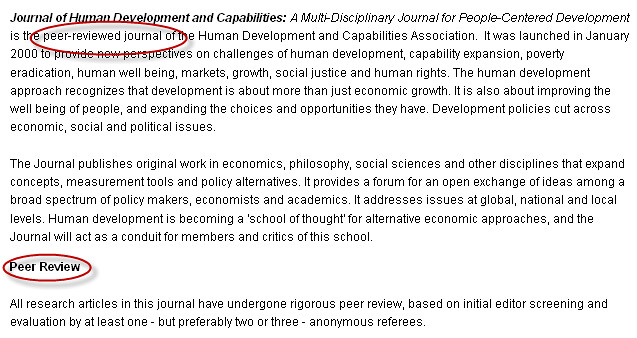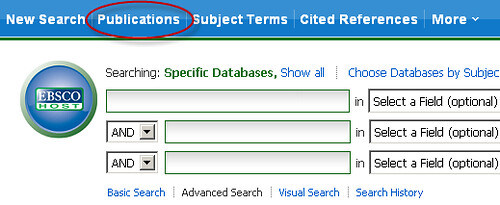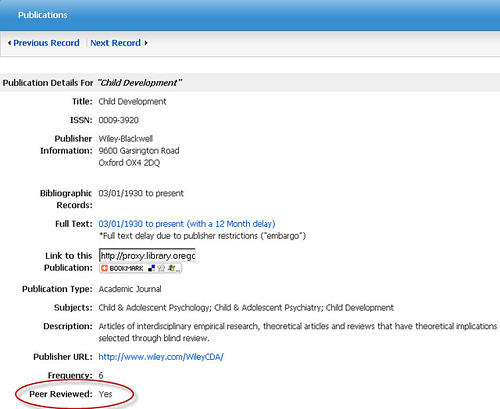While several databases such as 1Search or Academic Search Premier give you the option to choose a checkbox to "limit to articles from peer-reviewed publications," these checkboxes are not fool proof. Use two out of the following three methods on this page to determine if the articles you have found are peer-reviewed. First, either check the journal's website or use the database to find out if the journal uses the peer review process to edit articles. Finally, always check that the article itself is peer reviewed and reporting on original research by looking for specific characteristics of the article.
One of the best places to find out if a journal is peer-reviewed is to go to the journal's website (just Google the journal title).
Most publishers have a website for a journal that tells you about the journal, how authors can submit an article, and what the process is for getting published.
If you find the journal's website, look for the link that says "information for authors," "instructions for authors," "submitting an article" or something similar.

Another place to find out if the journal is peer-reviewed is to use one of the online databases.
For example, if you know that articles from your journal appear in the Academic Search Premier database, you can search for the journal in the database and learn more about it.
Go to Academic Search Premier and click on Publications at the top of the screen.

Enter the name of the journal and click browse. If the journal is included in the database, you will see it in the list of results.

This will take you to the journal information. At the bottom, you can see that this journal is peer-reviewed.

Academic Search Premier does not include all journals so the one you are looking for may not be listed here. You can also try Academic OneFile and browse for the publication.
Peer reviewed articles are research articles that have been evaluated and approved by other experts in the field before being accepted for publication in a journal. To identify peer reviewed and scholarly articles, consider these elements:
NOTE: In many databases, such as EBSCO, Gale, and ProQuest it is possible to limit to Peer Reviewed/Scholarly. See illustrations for this at: University of California - Riverside
Reading a scholarly article can seem daunting at first. Scholarly articles are long and have a lot of data. If you break down the article into components, it will make it easier to read and understand.
For a quick overview, click on the link below to see an example of a scholarly article and its parts.
